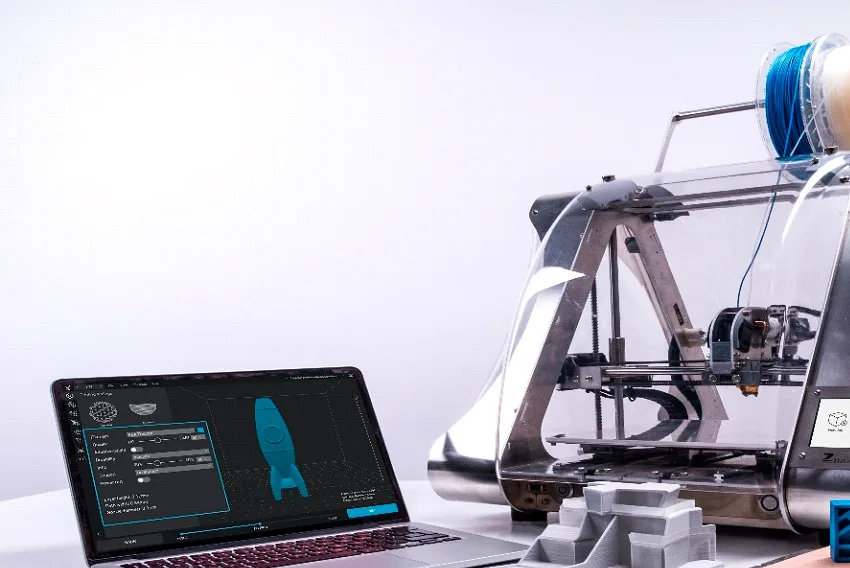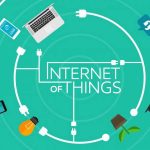Top 5 Challenges for Industrial IoT (IIoT) Implementation

The physical world is transforming into digital beings and there is an explosion of smart devices and technologies that have allowed this transformation to happen. Thanks to IoT, as machine learning, artificial intelligence, robots, and high-speed internet are driving forces in technological evolution.
One such technology that is leading the change in manufacturing space is the Industrial Internet of Things (IIoT) which is also known as the Industrial Internet or Industry 4.0. By combining machine-to-machine communication with big data analytics in industry, IIoT can drive unprecedented levels of efficiency, productivity, and performance.
“As per the analytical reports of Accenture, the industrial internet of things (IIoT) will reinvent many sectors that account for approximately two-thirds of the global economic output hence driving economic gains of 14.2 trillion dollars by 2030.”
However, with the evolution of the industrial internet of things (IIoT), new opportunities have arisen, while also bringing new challenges for business leaders.
Therefore organizations across various industries are increasingly compelled to navigate and overcome the obstacles that accompany the implementation and adoption of the IIoT. So, let’s dig deep and learn about the top five industrial iot implementation challenges currently faced by organizations.
Connectivity Outage
There is a constant need for uninterrupted connectivity if an enterprise is planning to adopt the IIoT. Even while using Internet connectivity, its availability of 100% is nearly impossible. Either for maintenance or for some other reason, at one point of time, there’s always a possibility of a loss of connectivity.
For example the Boeing 737 Max crisis serves as a stark reminder of the criticality of uninterrupted connectivity in the context of IIoT. The ill-fated aircraft model faced severe consequences due to connectivity issues and a lack of robust data transmission.
In the case of the 737 Max, the reliance on sensors and automated systems for critical flight functions meant that uninterrupted connectivity was of paramount importance. However, the failure of the Angle of Attack (AoA) sensors, coupled with inadequate redundancy measures, led to multiple tragic incidents.
The aircraft’s Maneuvering Characteristics Augmentation System (MCAS) relied on data from the AoA sensors to automatically adjust the aircraft’s pitch. When a single faulty sensor provided incorrect readings, it triggered erroneous responses from the MCAS, resulting in two devastating crashes. This example emphasized the importance of uninterrupted and accurate connectivity in safety-critical systems.
If an enterprise is planning to implement the IIoT technology in its system, the critical need is to be present with an unremitted connection. It would be best to make sure to use the proper cables and set a system that guarantees zero data loss—even in case of connectivity Issues.
Related Blog: Top 10 Challenges Enterprises Face in IoT Implementation
Battle to Secure Infrastructures
Securing infrastructure is one of the biggest IIoT challenges for organizations. The vast network of interconnected devices and systems in the IIoT landscape expands the potential attack surface, making it crucial to address security concerns to protect operational systems and data integrity.
Though decision-makers have the authority to come up with improvements and mitigate vulnerabilities to combat these risks. Conducting regular penetration tests to identify and fix possible weaknesses that hackers could exploit is one useful technique. These tests can also detect human-related threats such as phishing attempts, allowing organizations to improve employee awareness and training.
However, a Barracuda report in 2022 highlighted a worrisome trend: A staggering 96% of business leaders have acknowledged the urgent need to ramp up their investment in industrial security. As a result, an impressive 72% of organizations have either already implemented or are actively pursuing IIoT/OT security projects. However, despite this acknowledgment and progress, numerous hurdles persist in the implementation process, with basic cyber hygiene posing a significant challenge.
As the complexity of the IIoT landscape increases, the need for enhanced manageability and security becomes paramount. In this pursuit, blockchain emerges as a transformative force, offering a potential solution to fortify the integrity of IIoT systems. Regarded as a disruptive technology by experts, blockchain holds immense promise across diverse industries.
Need Help with IoT
Development?
- Proven
- Transparent
- Dependable
Confronting Data Dilemma
Data collection presents a formidable challenge unlike its consumer IoT counterpart. While consumer IoT devices typically collect data within a single residence, IIoT networks span vast global sites and capture information from numerous equipment pieces simultaneously.
The sheer scale and diversity of data collection in IIoT implementations pose significant hurdles for decision-makers. Uncertainty arises regarding efficient data processing and determining which data to collect in the first place.
To address these one biggest IIot challenges, a clear understanding of the organization’s IIoT objectives is crucial. By setting specific goals, decision-makers can identify the types of data that align with these milestones. For example, if the objective is to minimize equipment outages, relevant data points may include machine temperatures, abnormal vibration patterns, and cumulative operating hours.
Equally important is ensuring the integrity and quality of the collected data. Duplicate or inaccurate information can prove more detrimental than having no data at all. Implementing robust data validation processes and employing advanced analytics techniques can help mitigate such risks and ensure high-quality data utilization.
Combining Technology With Legacy Infrastructure
IIoT projects rarely start from scratch; they involve unlocking value in existing systems and optimizing current operations. This presents a unique challenge as new IIoT devices and technologies must seamlessly integrate with legacy systems from various manufacturers.
For IT admins and OT engineers, achieving transparency, access, and control throughout the end-to-end operation becomes a complex task. The amalgamation of diverse technologies and equipment, coupled with the industry’s relative youth, means there are no established standards for processing data exchanged between different systems, devices, and machines.
Interoperability benchmarks and security measures for legacy equipment are still in the nascent stages of IIot development. Furthermore, the integration of these systems becomes crucial to handle the immense volume of data generated by IIoT. This data is often heterogeneous, demanding management through non-relational databases.
Consider a business implementing vibration sensors for predictive maintenance and expanding its device fleet with additional vibration sensors. Suddenly, new data arrives, utilizing a specific data format, different wireless technology, and a new IP protocol that requires processing. Accommodating these changes becomes imperative.
Mountains of Scalability
Scaling IIoT implementations poses a significant hurdle for professionals in their quest for progress. According to Bain’s 2022 study, a staggering 80% of IIoT decision-makers fall short, scaling less than 60% of their planned projects.
The study unearthed three prominent factors hindering project scalability:- Complex integration efforts demanding excessive resources: The process of integrating IIoT technology into existing systems and infrastructure can be intricate and resource-intensive- be it for a in-house team or an externally hired software development firm. This complexity can hinder scalability as it requires significant time, effort, and investment to ensure seamless integration across different platforms and devices.
- Complex integration efforts demanding excessive resources: The process of integrating IIoT technology into existing systems and infrastructure can be intricate and resource-intensive. This complexity can hinder scalability as it requires significant time, effort, and investment to ensure seamless integration across different platforms and devices.
- Vendors unable to support expansion: In some cases, the vendors providing IIoT solutions may not have the capabilities or infrastructure to support the scalability needs of the projects. This can include limitations in their hardware or software offerings, lack of technical expertise, or inadequate customer support, making it challenging to scale the implementation effectively.
- Prohibitively expensive or questionable life cycle support: The cost and viability of supporting an IIoT project throughout its life cycle can impact scalability. If the ongoing support and maintenance required for the project are excessively expensive or deemed unreliable, organizations may face difficulties in scaling their initiatives. This could include high maintenance costs, compatibility issues, or concerns about the longevity and sustainability of the technology.
Combating these factors is crucial to overcoming scalability challenges in IIoT implementations. Those facing difficulties must carefully evaluate integration complexities and partner with reliable IoT application development service providers that offer robust scalability capabilities. It is important to ensure that long-term support and cost-effectiveness of the project align with their scalability goals for successful scaling.
Conquer Challenges and Propel Your IIoT Projects
Adopting the Industrial Internet of Things (IIoT) comes with its fair share of challenges, but they should not hinder the progress of your projects. Rather than getting disheartened by the obstacles that may arise, it is crucial to stay focused on your goals and the positive outcomes that lie ahead. Experts predict that the IIoT will revolutionize production levels and become a driving force behind innovation in various industries.
The benefits of IIoT are not limited to just enterprises. End users and the workforce itself stand to gain significant advantages from the extensive automation processes that IIoT enables. With time, the IIoT will continue to enhance productivity, efficiency, and overall business performance.
At Finoit Technologies, we understand the power of IIoT and offer comprehensive services to help businesses navigate the complexities of this transformative technology. As a renowned mobile application development company, we build mobile-driven IoT solutions for both SMBs and enterprises. Whether you have questions or require assistance, our team is here to support your IIoT journey.
Don’t let challenges hold you back. Instead, seize the opportunities presented by IIoT and drive innovation in your industry. Contact us at info@finoit.com to explore the potential of IIoT for your organization.
Need Help With
IoT Implementation?
- Proven
- Transparent
- Dependable


